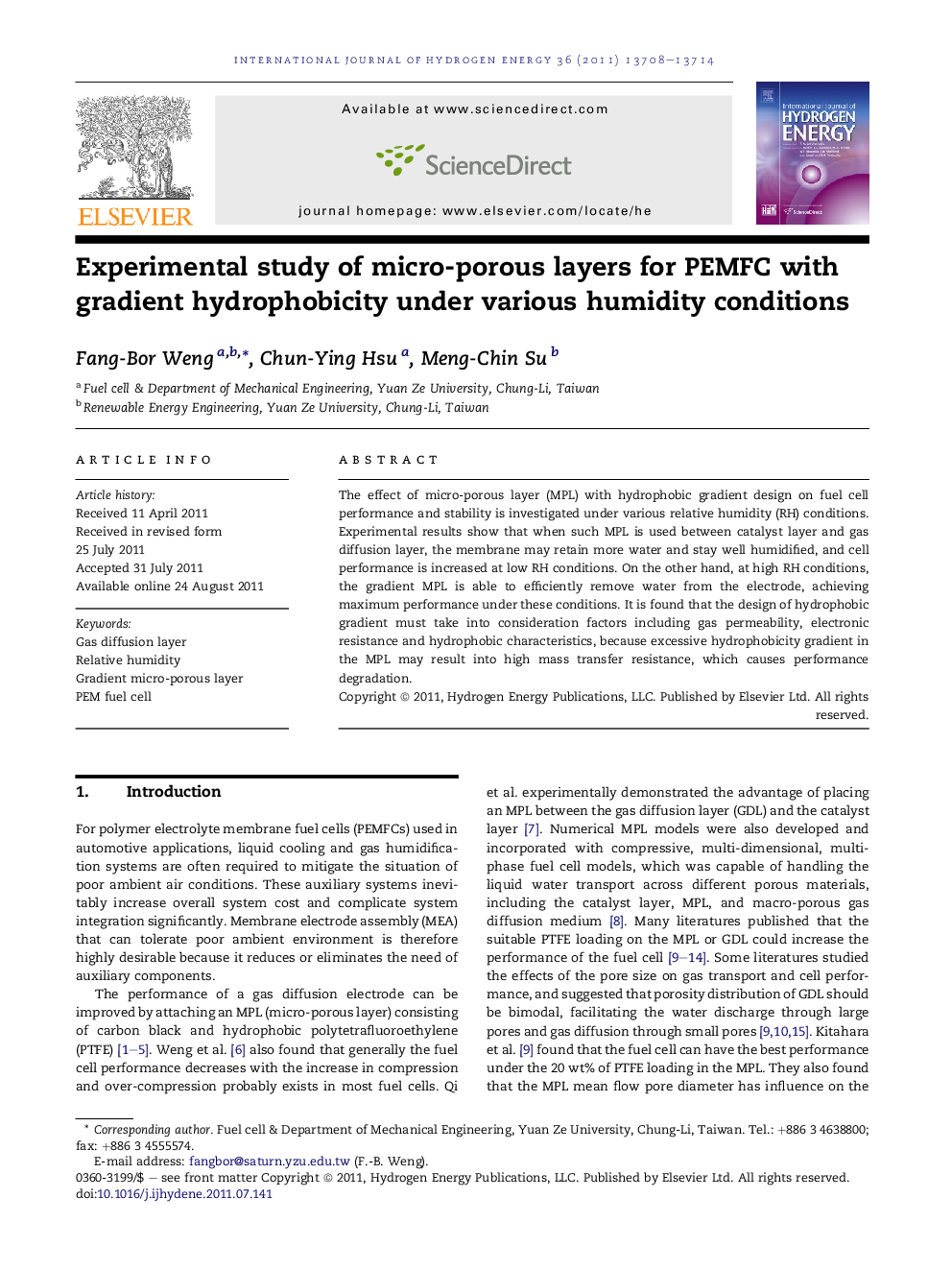| Article ID | Journal | Published Year | Pages | File Type |
|---|---|---|---|---|
| 1278716 | International Journal of Hydrogen Energy | 2011 | 7 Pages |
The effect of micro-porous layer (MPL) with hydrophobic gradient design on fuel cell performance and stability is investigated under various relative humidity (RH) conditions. Experimental results show that when such MPL is used between catalyst layer and gas diffusion layer, the membrane may retain more water and stay well humidified, and cell performance is increased at low RH conditions. On the other hand, at high RH conditions, the gradient MPL is able to efficiently remove water from the electrode, achieving maximum performance under these conditions. It is found that the design of hydrophobic gradient must take into consideration factors including gas permeability, electronic resistance and hydrophobic characteristics, because excessive hydrophobicity gradient in the MPL may result into high mass transfer resistance, which causes performance degradation.
► The performance of gradient micro-porous layer (GMPL) and traditional GDL are compared. ► The GMPL excluded water from the catalyst layer, preventing water flooding under high humidity conditions. ► The GMPL performed better than 34BC under low humidity conditions with optimal PTFE loading.
